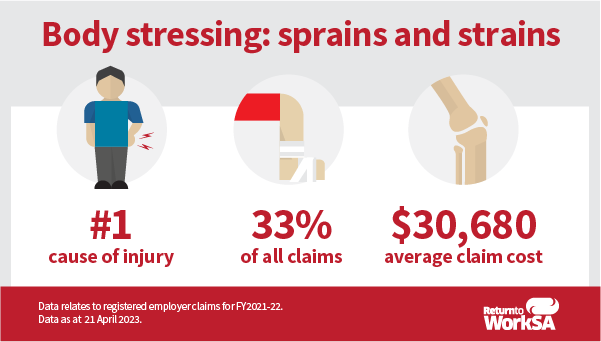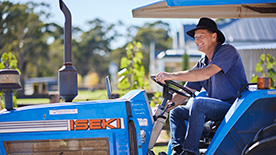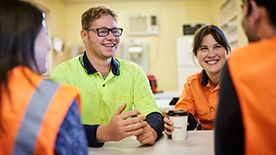Reduce the risk of sprains and strains in your workplace
Sprains and strains account for 33% of work injury claims
Sprains and strain-type injuries are grouped together and collectively known as “body stressing” injuries.
Body stressing claims were the most common type of claim accepted in South Australia last financial year. And the year before that. And the year before that. In fact, since 2015, body stressing claims have accounted for more than one third of all claims lodged in the state.
The prevalence of this necessitates an opportunity for reflection; are we doing enough to combat this significant problem, and more importantly, what are the right things to do?

Understanding causes
The ability to combat a problem effectively stems from having a thorough understanding of what is creating the problem in the first place. In other words, what are the contributing factors that are leading to this? Was the item being lifted too heavy? Was it being done too often or too quickly? Was it awkward? These are common questions that may be asked when investigating an incident or injury, but the answer to this begs another set of questions:
- How do we define what too heavy is?
- What is too often or too quickly?
- What is awkward?
Truly understanding why injuries are occurring can be challenging, so the risk of them occurring again remains.
Workplaces can help prevent sprains and strains
Workplaces should be empowered to recognise how much influence they can have on preventing sprains and strains at work.
Looking beyond the obvious solutions can yield positive results. As well as training staff in how to perform a task safely, consider:
- Are staff engaged and encouraged to consider how a difficult task could be redesigned?
- Is there analysis of what elements within a task or job are the most problematic?
- Are the demands of a person’s job clearly defined, so that better matching of a worker to a job can occur?
Strategies to reduce the risk of sprains and strains
At a high level, work should be designed in a way that promotes health and wellbeing rather than detracts from it. Some strategies that are effective include:
- Ensure robust hazard and incident reporting processes are in place, so that issues are quickly identified and rectified. You cannot fix a problem that you don’t know about.
- Risk assess different jobs and tasks to understand where the risk is, and focus efforts on those areas in a targeted way. Cross-checking this with injury and incident data can help.
- Evaluate the effectiveness of any strategies or changes implemented to make sure issues have been thoroughly addressed and new issues have not been created.
- Consider the demands of the work being undertaken – not just weights and forces, but shift patterns, shift lengths, rotation to different roles, suitability and safety of the working environment, availability of equipment (and suitability of this), ability for workers to seek assistance, job control and autonomy, meaning and purpose of work etc.
- Ensure workers have the physical and psychological capacity to undertake the required work – noting that this changes over time.
- Maximise the workers’ autonomy and responsibility and give them a chance to contribute to how their work is done. This can empower workers to own their actions.
When sprains and strains do occur at the workplace, it is important to remember that meaningful participation in safe work is a crucial part of the recovery process. The points above will not only help to minimise injuries occurring, but will also help to light the way when navigating the road back from injury.
Need advice?
For more information and assistance with injury prevention, contact us at injuryprevention@rtwsa.com.






 Date printed: 23 Dec 2025
Date printed: 23 Dec 2025

